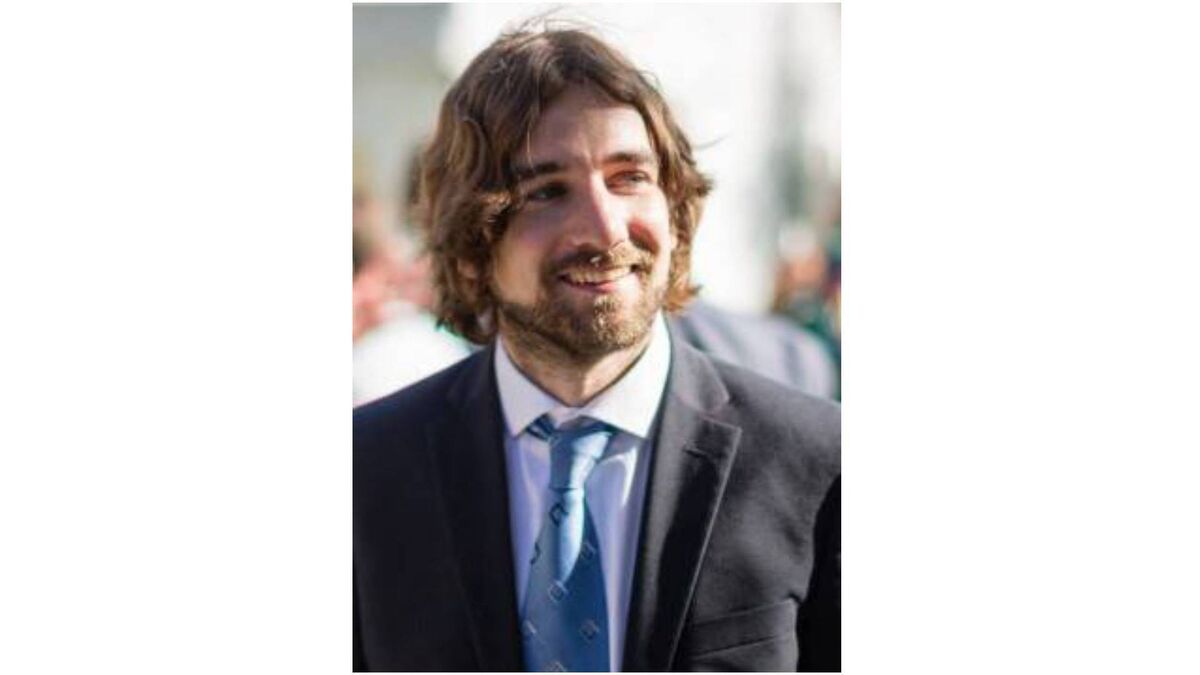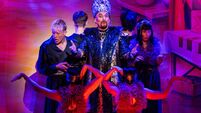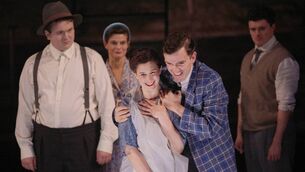University of Limerick research helps to unravel Game of Thrones secrets

Jon Snow and Daenerys Targaryen in Game of Thrones. Picture: Helen Sloane
There are 2,000 named characters with more than 41,000 interactions between them; the timeline jumps across generations; there are half-sisters and hidden siblings; people change or totally abandon names and opt for disguises regularly; oh, and there are dragons — no wonder it took a team of researchers across the University of Limerick and four other universities to unravel some of the secrets behind Game of Thrones.
Researchers from five universities across Britain and Ireland — including UL’s Dr Pádraig MacCarron — came together to unravel the books behind one of the most successful fantasy series of all time. George RR Martin’s series of books, upon which the blockbusting Game of Thrones series is based, are weighty, convoluted tomes.

In a paper that has just been published by the Proceedings of the National Academy of Sciences of the USA, the team of physicists, mathematicians and psychologists from Limerick, Coventry, Warwick, Cambridge and Oxford universities used data science and network theory to analyse the acclaimed book series by George RR Martin.
Cathal O'Conchobhair, originally from Wicklow, got the mammoth task of working his way through the thousand of pages of the series and logging every character’s name and interaction with each other. The perfect lock-down job you might think.
Dr MacCarron, a postdoctoral researcher at the Centre for Social Issues Research and Mathematics Applications Consortium for Science and Industry (MACSI) at UL, says: “The study shows that the way the interactions between the characters are arranged is similar to how humans maintain relationships and interact in the real world.”
The team found that, despite more than 2,000 named characters in ‘A Song of Ice and Fire’ and over 41,000 interactions between them, at chapter-by-chapter level these numbers average out to match what we can handle in real life.
Even the most predominant characters — those who tell the story — average out to have only 150 others to keep track of. This is the same number that the average human brain has evolved to deal with.
It is understood that the average person retains around 150 friends and acquaintances. British anthropologist, Robin Dunbar, came up with this ‘magic number’ by analysing historical as well as modern groupings: offices, communes, factories, residential campsites, military organisations, villages, and even Christmas card lists.
So how does GRR Martin himself keep track of his ‘Meereenese Knot’ of stories with thousands of characters?
As any Game of Thrones fan knows, it’s important not to get too confident in the life-expectancy of literally any character. It seems like a gruesome death could befall anyone at any time.
Well, that’s one way of culling the list of acquaintances when it gets too big.
“Social networks of the most connected characters, while seemingly extensive, mirrored the typical range of social networks that humans maintain. Furthermore, characters’ social networks did not extend beyond the cognitive limit of social connections that humans are able to sustain."
“Although the time intervals between significant deaths in relation to the story’s timeline may appear random, they are not told in chronological order. Re-arranging them in order of which they occur, they follow a pattern more commonly observed in reality,” added Dr MacCarron.
Fellow researcher Professor Robin Dunbar, from the University of Oxford, observed:
The research was a labour of love for the team who worked on it — they are all fans of Game of Thrones and were delighted to put their uni-skills to use on this project.
“This wasn’t our full-time job or anything — it’s more something that we were slowly tipping away at in the background,” laughs Dr Mac Carron.
But all this expertise and research is also used in more serious projects.
University of Limerick researchers also helped Brazilian Federal Police devise one of the best ways of arresting gangs involved in the distribution of videos and photographs of children being sexually abused.
A Brazilian police officer, Dr Bruno da Cunha, came to Limerick to do a research PhD — it centred around mathematicians from Limerick working out which paedophiles detectives should go after on the so-called ‘dark web’.
They studied a network of paedophiles sharing images of children being abused. Of more than 10,000 users of the network, 766 were sharing content. The team of researchers from the Mathematics Applications Consortium for Science and Industry (MACSI) and the Centre for Social Issues Research, both based at UL, analysed the connections between each criminal and investigated how effective the police operation was in disrupting the distribution of the content.
As a result, police officers targeting them in the future look set to be more efficient.
The Brazilian police operation led to the arrest and identification of 182 users – 170 of whom were distributors – and the rescue of six children.
And currently, a team at UL, led by Dr Mike Quayle, is working on an attitude network project.
Basically, they are mapping how people who subscribe to one theory or belief - for example climate change deniers or Brexit supporters - may also be linked to another seemingly unrelated opinion-based group such as gun rights campaigners or Trump followers.
But back to Game of Thrones, Winter is most definitely coming so maybe it’s time to settle down for a re-watch of this series and see if these researchers missed any character or interaction?



